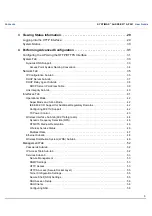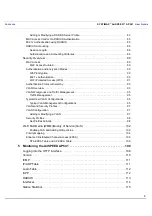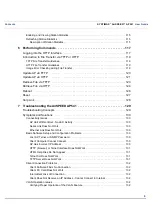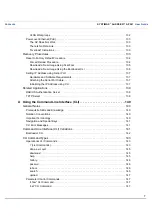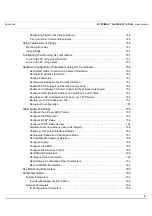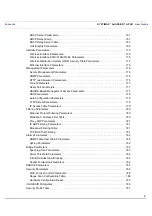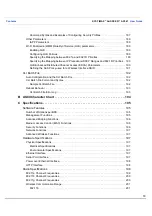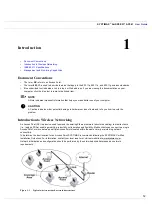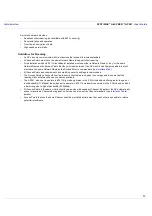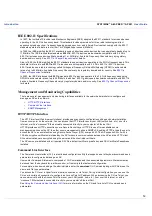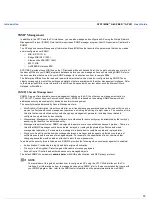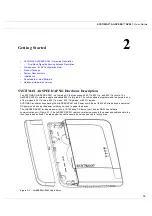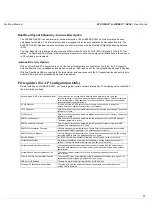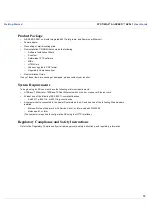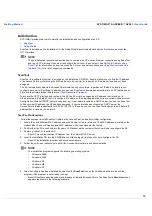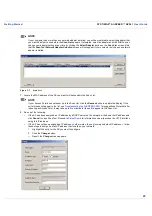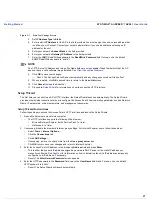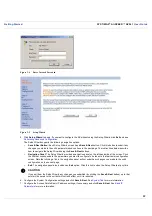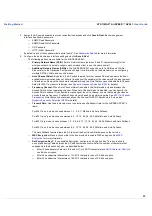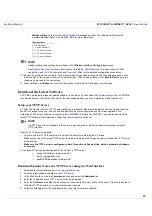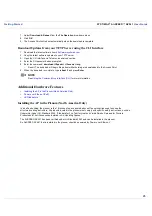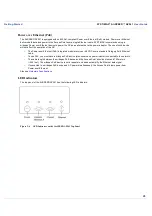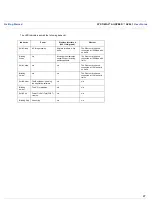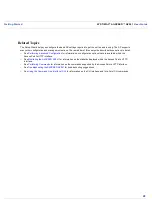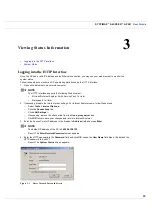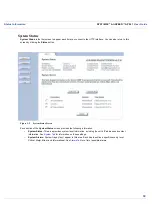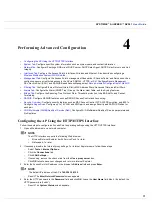
User Guide
Getting Started
SYSTIMAX
AirSPEED
AP541
User Guide
17
Dual Band Signal Enhancing Antenna Description
The AirSPEED AP541 can use internal or external antennas. The AirSPEED AP541 has two diversity antennas
embedded for the radio. The internal antennas are arranged to provide both spatial and polarization diversity. The
AirSPEED AP541 also has two external antenna connectors for use with the Dual Band Signal Enhancing Antenna
(SEA).
The Dual Band SEA is a dual band indoor antenna that works with both 2.4 GHz (802.11b/g) and 5 GHz (802.11a)
radios. The Dual Band SEA allows for better antenna placement to enhance the signal for installations in the ceiling or
in RF unfriendly environments.
Antenna Diversity Options
With one Dual Band SEA connected to one of the two external antenna connectors on the radio, the AP supports
antenna diversity (one embedded antenna and one external SEA) and one of the two embedded antennas is disabled.
With two Dual Band SEAs connected to the two external antenna connectors the AP supports antenna diversity (two
external SEAs) and both embedded antennas are disabled.
Prerequisites (for AP Configuration Only)
Before installing an AirSPEED AP541, you need to gather certain network information. The following section identifies
the information you need.
Network Name (SSID of the embedded radio)
You must assign the Access Point a Network Name before wireless users can
communicate with it. The clients also need the same Network Name. This is not the same
as the System Name, which applies only to the Access Point. The network administrator
typically provides the Network Name.
AP’s IP Address
If you do not have a DHCP server on your network, then you need to assign the
Access Point an IP address that is valid on your network.
HTTP Password
Each Access Point requires a read/write password to access the web interface. The default
password is “public”.
CLI Password
Each Access Point requires a read/write password to access the CLI interface. The default
password is “public”.
SNMP Read Password
Each Access Point requires a password to allow get requests from an SNMP manager.
The default password is “public”.
SNMP Read-Write Password
Each Access Point requires a password to allow get and set requests from an SNMP
manager. The default password is “public”.
SNMPv3 Authentication Password
If Secure Management is enabled, each Access Point requires a password for sending
authenticated SNMPv3 messages . The default password is “public”.
SNMPv3 Privacy Password
If Secure Management is enabled, each Access Point requires a password when sending
encrypted SNMPv3 data. The default password is “public”.
Security Settings
You need to determine what security features you will enable on the Access Point.
Authentication Method
A primary authentication server may be configured; a backup authentication server is
optional. The network administrator typically provides this information.
Authentication Server Shared Secret
This is a password shared between the Access Point and the RADIUS authentication
server (so both passwords must be the same), and is typically provided by the network
administrator.
Authentication Server Authentication Port
This is a port number (default is 1812) and is typically provided by the network
administrator.
Client IP Address Pool Allocation Scheme
The Access Point can automatically provide IP addresses to clients as they sign on. The
network administrator typically provides the IP Pool range.
DNS Server IP Address
The network administrator typically provides this IP Address.
Gateway IP Address and Subnet Mask
The gateway IP address and subnet mask of the network environment where the
Access Point is deployed.

